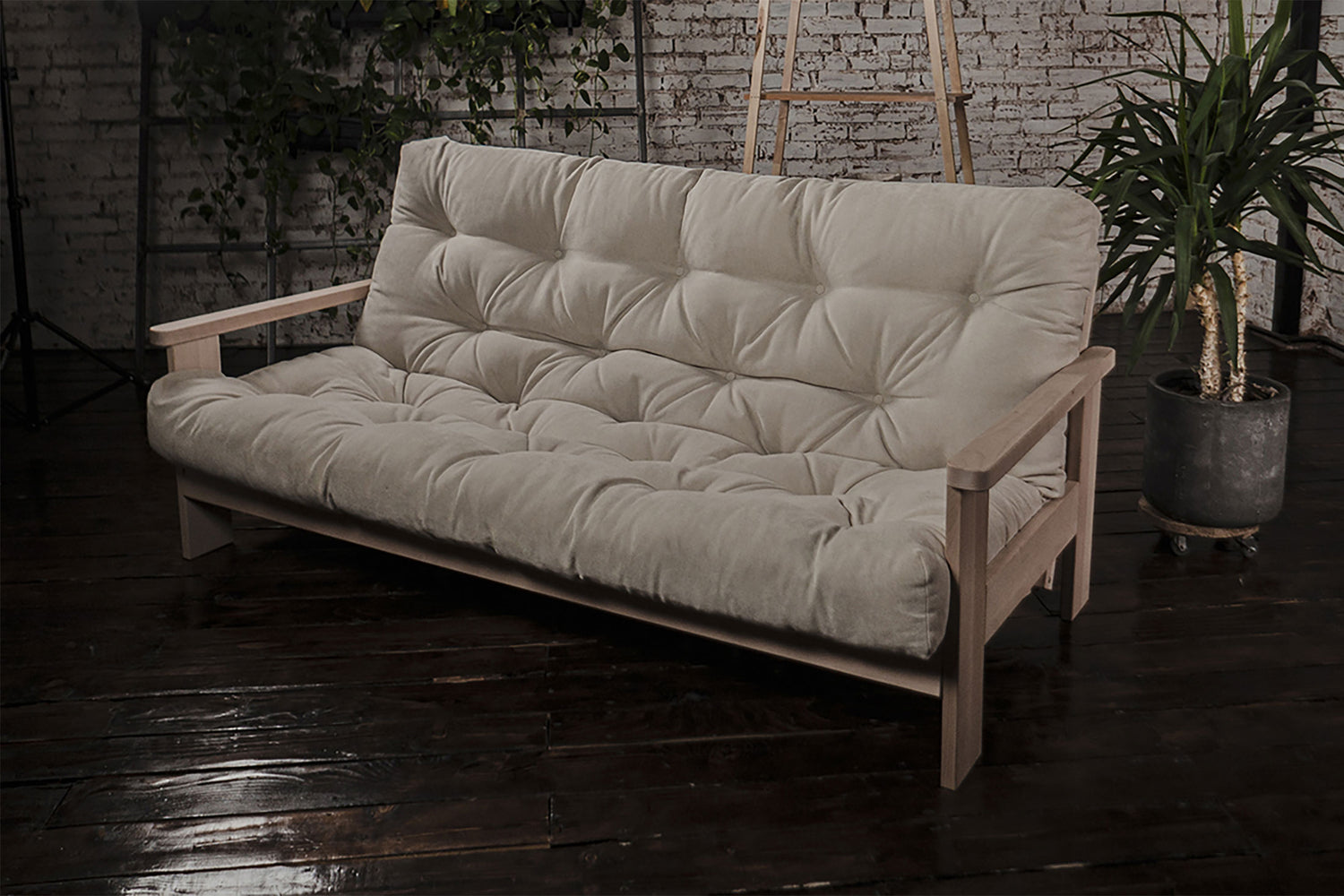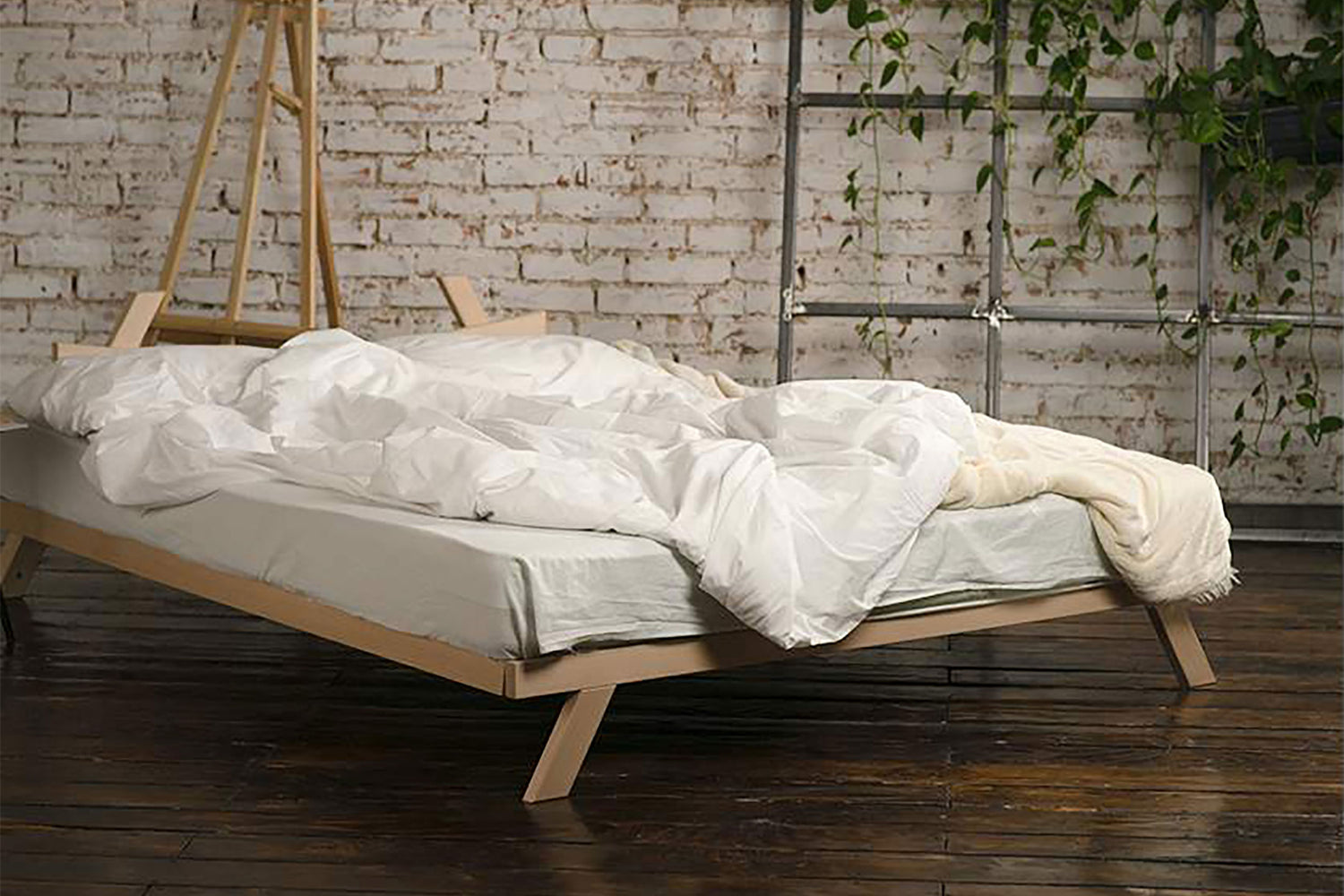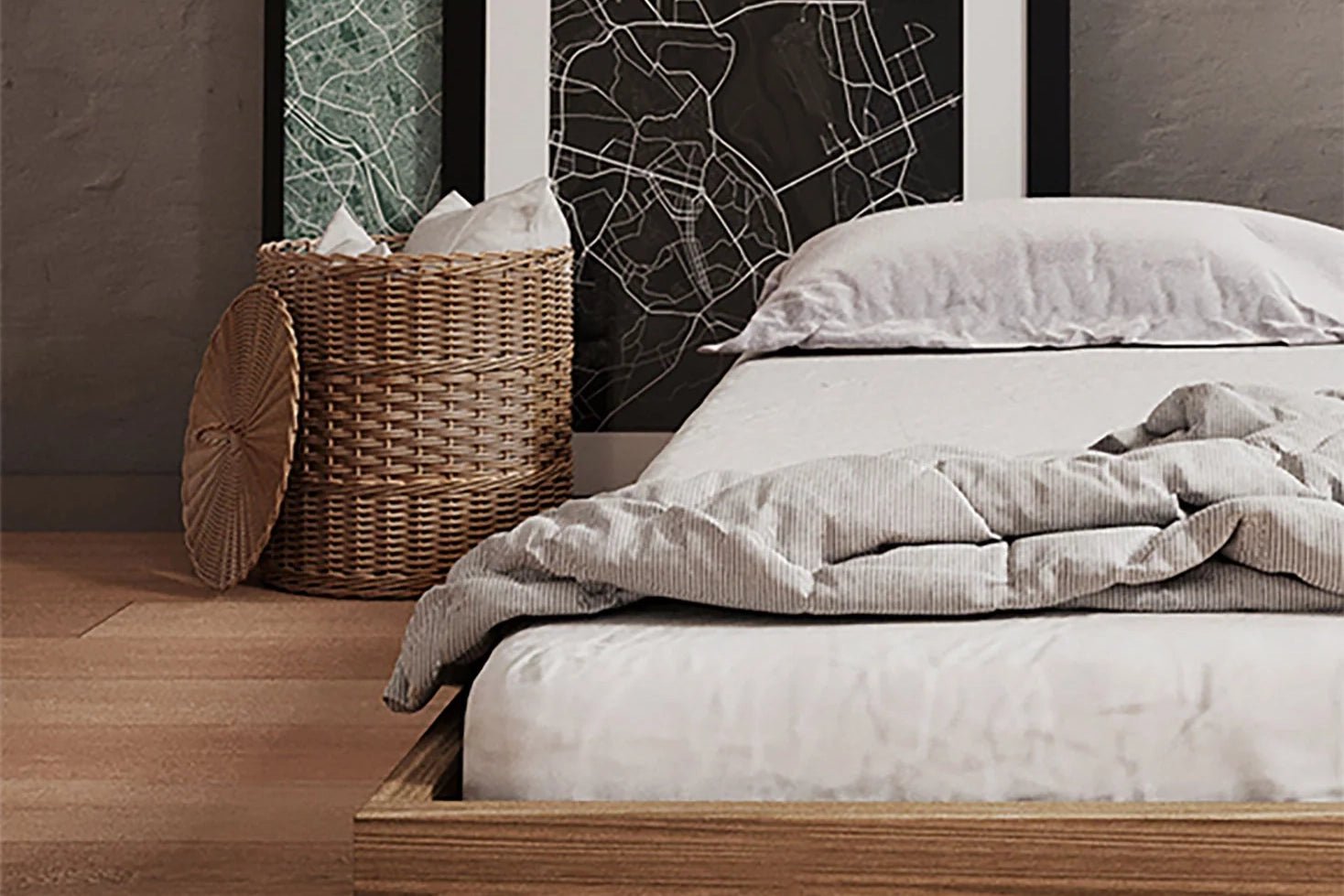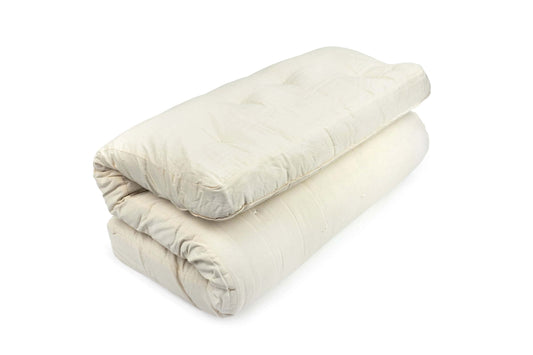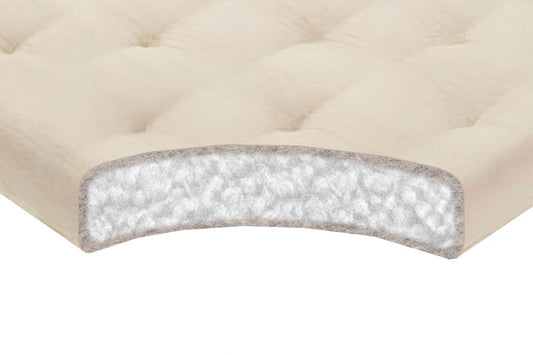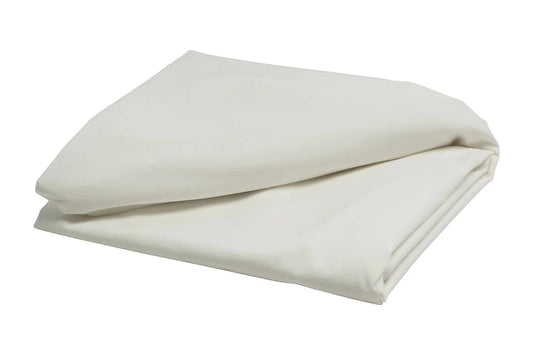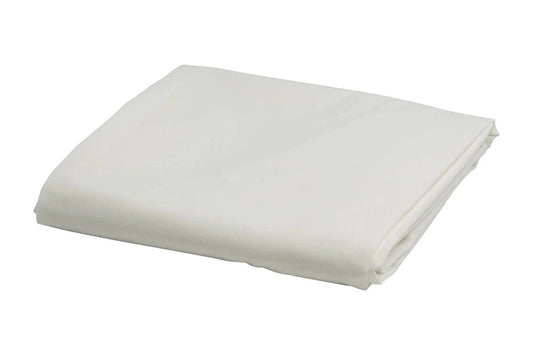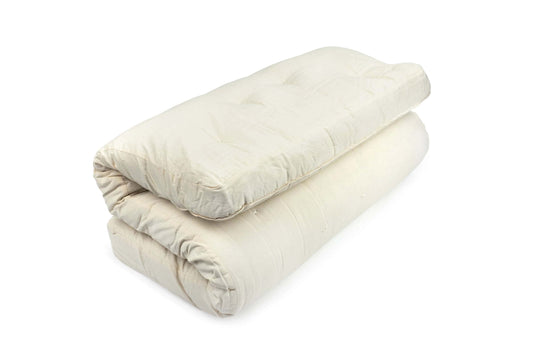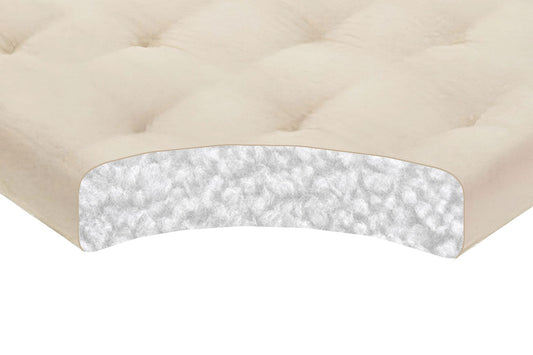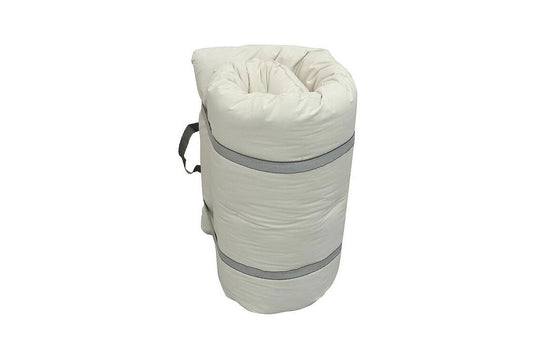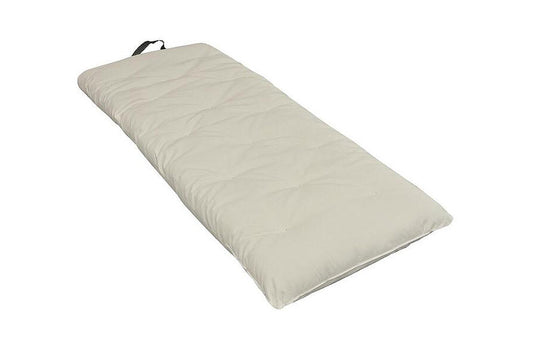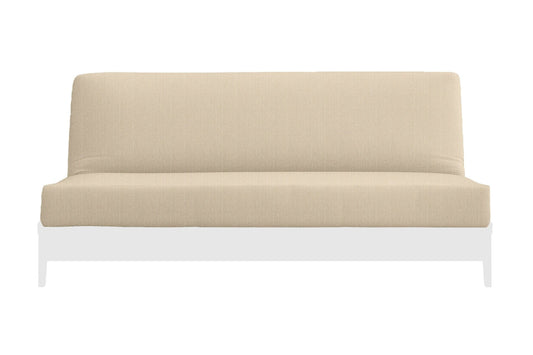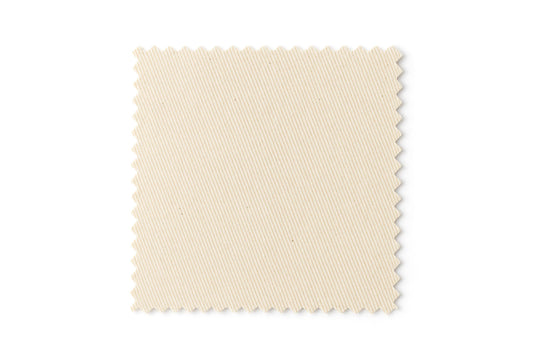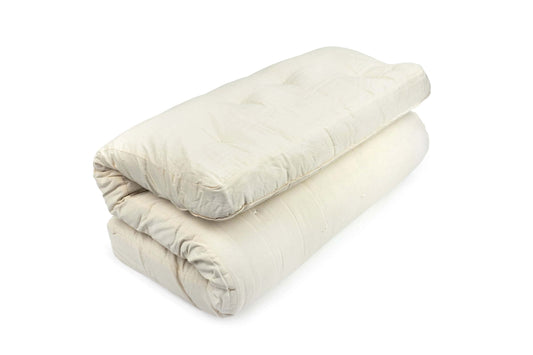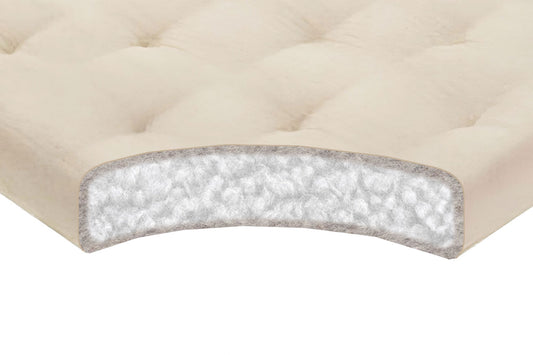
Why Do You Need a Mattress Topper? (What It Is, How It Helps & How to Choose)
Share
Your mattress sets the baseline for sleep, but it doesn’t always feel exactly right. Maybe it’s a touch too firm, you’re waking with pressure at the shoulders or hips, or heat builds up through the night. Replacing a mattress can be expensive—and unnecessary if the core support is still sound. A well-chosen mattress topper adds a thoughtful layer between you and the bed, fine-tuning feel, improving airflow, and extending the life of what you already own. In this calm, practical guide, we explain what toppers do, when they help, how natural materials differ from conventional foams, and how to pick the right option for your sleep style.
What Is a Mattress Topper?
A mattress topper is a removable comfort layer—typically 2–4 inches thick—that sits on top of your existing mattress to change the way it sleeps. Unlike a thin pad or protector, a topper meaningfully adjusts pressure relief, responsiveness, and temperature regulation. Toppers do not repair a truly worn-out or collapsed mattress, but when your base bed is structurally sound, the right topper can transform how it feels in a single night. Think of it as a “reset” for comfort: softer where you need cushioning, more buoyant where you need lift, and more breathable where heat builds.

Mattress Topper vs. Pad vs. Protector
These terms are often used interchangeably, but they do different jobs. A topper changes comfort and support. A pad is usually thinner—great for a touch of plushness, but not a true feel change. A protector shields against spills and allergens without changing the feel much at all. Many sleepers layer a protector over a topper to keep the surface clean while preserving the topper’s breathability; this is especially helpful with natural fiber toppers that excel at moisture management.
What Do Mattress Toppers Do?
- Adjust comfort: Add plush pressure relief to a firm mattress or a little structure to one that feels too “mushy.”
- Improve support & alignment: Responsive materials can keep your spine closer to neutral, reducing morning stiffness.
- Cool the surface: Breathable natural fibers move heat and moisture away from your body throughout the night.
- Isolate motion: A topper can soften partner movement so you wake less often.
- Protect the mattress: It absorbs day-to-day wear, sweat, and body oils so your mattress ages more gracefully.
Do Mattress Toppers Help? (Real-World Scenarios)
Many people find toppers especially useful in a few common situations. If your new mattress feels great by day but too firm by 3 a.m., a plush fiber topper softens contact points at the shoulders and hips. If you love a supportive feel but want a bit more “lift” rather than sink, a responsive latex topper adds buoyancy and helps alignment without swallowing your posture. If one partner sleeps warm, a breathable wool or cotton topper can ease heat build-up across the whole bed. And for guest rooms, rentals, dorms, RVs, or Airbnbs, a topper quickly makes a basic mattress feel welcoming without the cost of a full replacement.
Are Mattress Toppers Worth It?
For many sleepers, yes. A quality topper costs a fraction of a new mattress and can solve specific comfort issues the day it arrives. It’s most worthwhile when your base mattress is still supportive—i.e., no deep body impressions or broken springs. If your bed is significantly sagging, a topper can improve the surface feel but won’t correct the underlying collapse; in that case, consider evaluating the mattress itself and, if needed, choosing a safer, cleaner base bed (our guide on healthy materials in non-toxic mattresses is a helpful next read).

Can a Mattress Topper Fix a Bad Mattress?
Honest answer: it depends what “bad” means. If the surface simply feels too firm or a bit flat, the right topper can make it feel new again. If there’s structural sagging—deep dips or a hammock-like feel—a topper will mask the sensation for a short time but can’t restore proper alignment. A quick test: lay a broom handle or long straight edge diagonally across your bed; if you can slide your hand under the middle easily, the mattress is sagging, and a topper should be considered a temporary comfort upgrade rather than a full fix.
Deep-Dive Benefits
1) Improves Comfort (Without the “Stuck” Feeling)
Comfort is personal. Side sleepers often need extra cushioning at the shoulders and hips so those joints can settle without going numb; back sleepers typically need a gentle cradle through the lower back so muscles relax. Natural fiber toppers (like wool or cotton) add plushness but still allow micro-movement, which helps you change positions easily. By contrast, dense memory foam tends to trap and hold a body impression—some people like that slow-melting feel, but others describe it as warm and “stuck.” If you prefer comfort that feels plush yet free-moving, fibers or latex are an easy win.
2) Provides Extra Support (Back & Joint Relief)
Support is less about firmness and more about staying aligned. A responsive, buoyant material adds lift under heavier areas so your spine doesn’t fall out of neutral through the night. This is where natural latex shines: it compresses where you need room—shoulders for side sleepers, glutes for many back sleepers—while gently pushing back everywhere else to keep you level. If you’re curious how that feels, explore our natural latex + wool topper; the blend delivers both alignment and surface softness.
3) Temperature Regulation (Cooler, Drier, Calmer)
Heat build-up is a leading cause of restless sleep. Polyurethane foams (including most memory foams) are insulative; they trap warmth next to the body. Natural materials manage heat and moisture differently. Wool fibers can hold and release vapor without feeling damp, smoothing out temperature swings in both summer and winter. Cotton allows steady airflow and a clean, cool handfeel. If you’re a warm sleeper—or you share a bed with one—consider a breathable surface layer like our 3″ natural wool topper or the cushioned organic cotton + wool topper.
4) Extends the Life of Your Mattress
Every mattress ages. Over time, friction, sweat, and compression fatigue the top comfort layers. A topper takes the brunt of daily use so the core support system stays intact longer. That means fewer surface impressions, a cleaner sleep environment, and more consistent feel from year to year. Rotate the topper periodically (and flip if the design allows) to distribute wear; simple habits like airing the bed and washing the protector keep everything fresher, too. For broader moisture and airflow tips, you may also find this mattress airflow guide useful.
5) Builds a Cleaner, Non-Toxic Sleep Surface
If you’re avoiding chemical flame retardants, fiberglass barriers, and high-VOC foams, a natural topper creates a healthier first contact layer between you and the mattress. Wool is naturally flame-resistant without added chemicals; certified organic cotton and natural rubber latex minimize synthetic inputs and off-gassing. Certifications like GOTS (for cotton/wool) and GOLS (for latex) help verify material integrity. For a wider strategy on choosing safer core beds, see 5 Tips on Choosing a Non-Toxic Mattress.
Types of Mattress Toppers (Pros & Considerations)
| Material | Feel & Performance | Best For | Considerations |
|---|---|---|---|
| Natural Latex | Buoyant, responsive support; lifts the spine; durable | Back & combo sleepers; those who want support without sink | Heavier than fiber toppers; choose low-VOC, natural latex |
| Wool | Plush, breathable, moisture-balancing; subtly cushions | Hot sleepers; side sleepers needing gentle pressure relief | Not as “springy” as latex; loft can be fluffed over time |
| Organic Cotton | Cool handfeel; airy, natural softness; easy to love | Warm climates; those sensitive to synthetic fibers | Less lift than latex; pair with wool for four-season comfort |
| Feather/Fiberfill | Cloud-like plushness; hotel-style surface | Short-term plush feel; guest rooms | Less supportive; requires regular fluffing |
| Memory Foam | Slow-melting contour; high pressure relief | Those who like a “hug” feel | Warmer, less breathable; can off-gas; may feel “stuck” |
Many sleepers enjoy hybrid designs that blend lift and breathability—like a latex core wrapped in wool for temperature balance. If you want a single piece that feels supportive and naturally cool, start with a latex + wool construction such as our latex/wool topper.
How to Choose the Right Topper (Practical Buyer’s Guide)
By Sleep Position
- Side sleepers: Look for plush pressure relief through shoulders/hips (wool or cotton + wool). If you want a little lift beneath that plushness, a thin latex layer works well.
- Back sleepers: Aim for gentle contour with buoyant support (natural latex). Too much sink can strain the lower back over time.
- Stomach sleepers: Keep the surface relatively flat and supported; avoid thick, ultra-plush toppers that dip the hips.
- Combination sleepers: Choose materials that allow easy movement (latex or breathable fibers) so turning doesn’t wake you.
By Firmness Preference
If your bed is close to ideal, a 2″ topper adds subtle refinement. For a firm mattress that needs a clear softening, 3–4″ in plush fibers is noticeable without swallowing posture. If you love the feel of lift rather than sink, latex delivers support with a smooth, resilient surface.
By Temperature
Run warm or live in a humid climate? Favor natural fibers that manage moisture and heat—wool excels year-round, cotton feels crisp and airy, and both breathe far better than dense petrochemical foams. Pair with a light, breathable protector so you don’t trap vapor at the surface.
By Sensitivities
If you’re sensitive to chemical odors, choose certified natural materials (GOTS/GOLS/low-VOC latex). Breathable fibers and open-cell latex designs keep the air fresh and reduce that “sealed” feeling many people notice with conventional foams.
By Budget & Longevity
Natural fiber toppers deliver excellent value and four-season comfort. Latex costs more but often lasts longer thanks to its resilience. If you’re balancing price and performance, a cotton + wool construction is a beautiful middle ground for many homes.
Mattress Topper vs. Buying a New Mattress
Choose a topper when your mattress feels close to right—supportive but a bit too firm, slightly flat at the surface, or warmer than you’d like. Opt for a new mattress when there’s structural sagging, sharp pressure points from broken springs, or if your body aches even after experimenting with topper thicknesses. If you’re evaluating the broader sleep setup, our piece on tufted vs. non-tufted mattresses is a helpful companion read, as is this guide on mattresses for back concerns.
Common Mattress Topper Mistakes (And How to Avoid Them)
- Buying too thick: It’s tempting to choose the loftiest option, but 3–4″ of ultra-plush fiber can over-sink some sleepers. Start with 2–3″ unless you know you want very plush.
- Ignoring breathability: If you run warm, prioritize wool/cotton or open-cell latex over dense foams.
- Expecting a topper to fix deep sagging: It can help comfort, not structure. If the base is shot, address the base.
- Skipping rotation and care: Rotate quarterly; refresh loft by airing fibers. A little maintenance goes a long way.
- Overlooking material quality: Cheaper foams compress quickly. Natural, well-built toppers hold shape and comfort longer.
Care, Maintenance & Lifespan
Most toppers benefit from periodic rotation; some can be flipped. Air out natural fiber toppers seasonally by stripping bedding for an afternoon to let the material breathe. Spot clean as needed and use a light, breathable protector to shield from spills while preserving airflow. With thoughtful care, quality latex or fiber toppers commonly deliver comfort for years; lifespan varies with body weight, sleep habits, and topper thickness.
People Also Ask (Expanded Answers)
What is a mattress topper used for?
To meaningfully change how your bed feels—softer or more supportive—without replacing the whole mattress. A topper can also improve cooling, reduce partner motion, and protect the mattress from day-to-day wear.
Do mattress toppers help with back pain?
They can. Many back and side sleepers prefer a responsive, buoyant surface that keeps the spine closer to neutral. Natural latex provides that gentle lift; pairing it with a thin fiber layer softens contact points without sacrificing alignment.
Is a mattress topper necessary?
Not always. It’s most helpful when the mattress is fundamentally supportive but the surface comfort isn’t quite right. If the bed is structurally failing, a topper offers short-term relief but won’t correct a broken base.
Do mattress toppers really work—and are they worth it?
When matched to your needs, yes. They’re a cost-effective way to personalize comfort, improve breathability, and extend mattress life. Natural materials—in particular—tend to feel better across seasons and age more gracefully.
Recommended Natural Toppers
- 3″ Natural Wool Topper — plush, breathable comfort; excellent temperature balance in all seasons.
- 3″ Organic Cotton + Wool Topper — airy, cool handfeel with gentle cushioning.
- Natural Latex + Wool Topper — buoyant alignment plus breathable softness.
Prefer to layer beneath the mattress for extra ventilation? Explore breathable foundations like mattress rugs; they can improve airflow from below and support a drier, fresher sleep surface.
Shop Natural, Non-Toxic Toppers
Ready to personalize your bed? Explore our curated collection of natural toppers—built from wool, cotton, and natural latex for comfort that breathes, supports, and lasts. If you’re also refreshing the rest of your setup, our non-toxic mattress guide is a practical next step for creating a cleaner, calmer bedroom.








